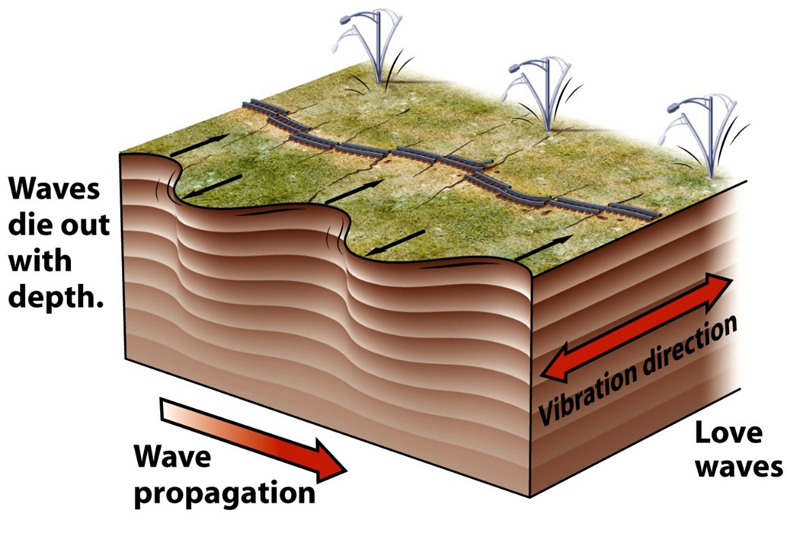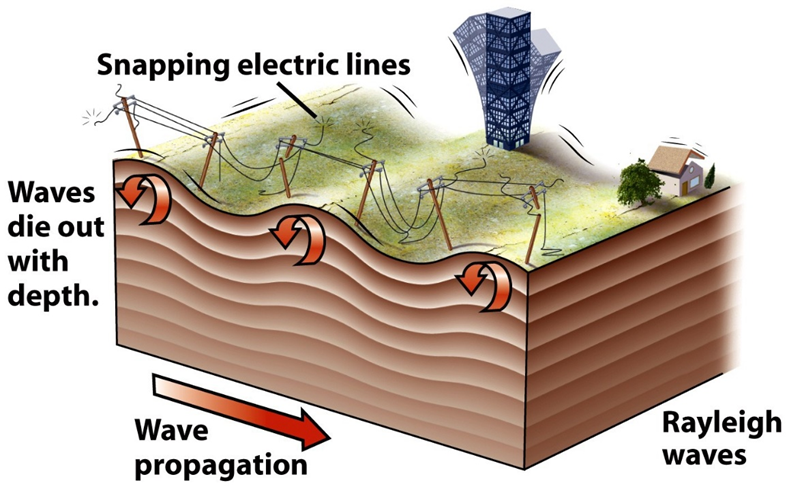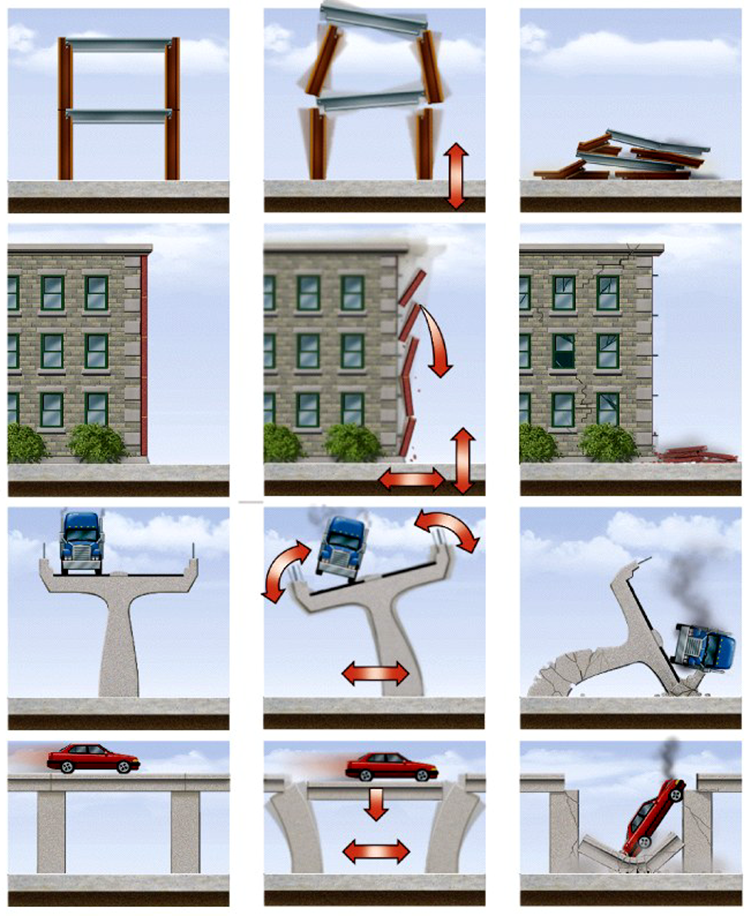Earthquake Damages
| Earthquake damages stem from many factors, including the movement of seismic waves through the surface, the type of rock buildings are built on, and the type of building. First, let's look at seismic waves.
Damages from seismic waves |
P-waves are the 1st to arrive.
|
 |
S-waves arrive next.
|
 |
Surface waves lag behind S-waves. Love waves are the first to follow.
|
 |
R-waves are the last to arrive.
|
 |
Results:
- Ground Shaking
- Liquefaction
- Landslides
- Ground Failure
- Building Collapse
- Surface Faulting
- Fires
- Tsunami
Ground Shaking
The severity of ground shaking depends on:
- Total energy released
- Distance from the source
- Acceleration
- Nature of the ground material
- Total time of shaking
Ground Shaking: Liquifaction
The ground beneath our feet is comprised of many different materials, ranging from crystaline rocks (granites, etc.), sedimentary rocks (sandstones, etc.), to sediments. Sediments are the raw material of sedimentary rocks. Grains are deposited and are gradually burried and compacted before lithifying into a rock.
Imagine a beaker full of sediments (any type). Most are touching one another in several places with gaps in between. These spaces between the grains are referred to as pore spaces, and can either contain air or a liquid, such as water. During an earthquake, the ground shakes, causing the grains to move about. If there is no liquid present, dry compaction occurs, and the grains will compress into a more compact configuration. If the grains are saturated, the pressure of the water within the pores increases, pushing the grains apart and causing liquifation to occur. In this case, the ground behaves like a liquid, and the structure above it can sink or collapse.
Ground Shaking: Landslides
Landslides and other forms of mass wasting can be reactivated during an earthquake.
Ground Shaking: Ground Failure
Ground failure can take on many forms, including surface faulting and ruptures, liquifaction, lateral spreading, ground subsidence, and landslides.
Ground Shaking: Building Collapse
Whether or not a building will collapse during an earthquake is dependent upon many factors, including:
- Intensity of the earthquake
- Duration of the vibrations
- Nature of the material upon which the structure rests
- The design of the structure
How does a building or other structure collapse? That depends upon the construction techniques used. How the ground moves is also a factor.
Oscillations – Ground shaking typically has frequencies of 0.1 to 30 oscillations / sec.
Resonance occurs when the natural oscillation of a building is the same as that of the ground shaking
| Slabs disconnect |
|
| Facades delaminate | |
| Bridges topple | |
Bridges come apart. |
Buildings collide. |
 |
| Masonry disintegrates | |
| Slopes collapse | |
| Lateral failures | Due to weak ground floors or lack of bracing. Think of a Deck of Cards House: Individual cards stacked to form a house are loose, and easy to fail (unbraced). However, when the cards are taped together, the house is stronger (braced) |
1994 Northridge EQ - U.S. Borax Bldg, Valencia, CA At the time of the Northridge Earthquake the U. S. Borax building was about a year or two old. However, due to the way the steel frame was welded together (a problem that many buildings in the area had), the building sustained much more damage than anticipated. |
|
 |
 |
 |
Upper left: Looking east. surface rupture that extended across the golf course (background), across the road, through the building (behind photographer).
Left: Damage to building as the surface rupture went through the building and out the other side.
|
 |
Looking south. Damage to the outside of the building. |
 |
 |
| Damage to the library inside the building. | Damage to one of the labs. The large machine in the back is an X-Ray diffraction machine. It weighs several thousand pounds and was bounced six feet or so away from the wall on the right.
|
 |
 |
| Before and after photos of my office. The entire window, made of safety glass, broke into zillions of little peices, many of the ceiling tiles fell, and the wall behind the door was heavily damaged. | |

